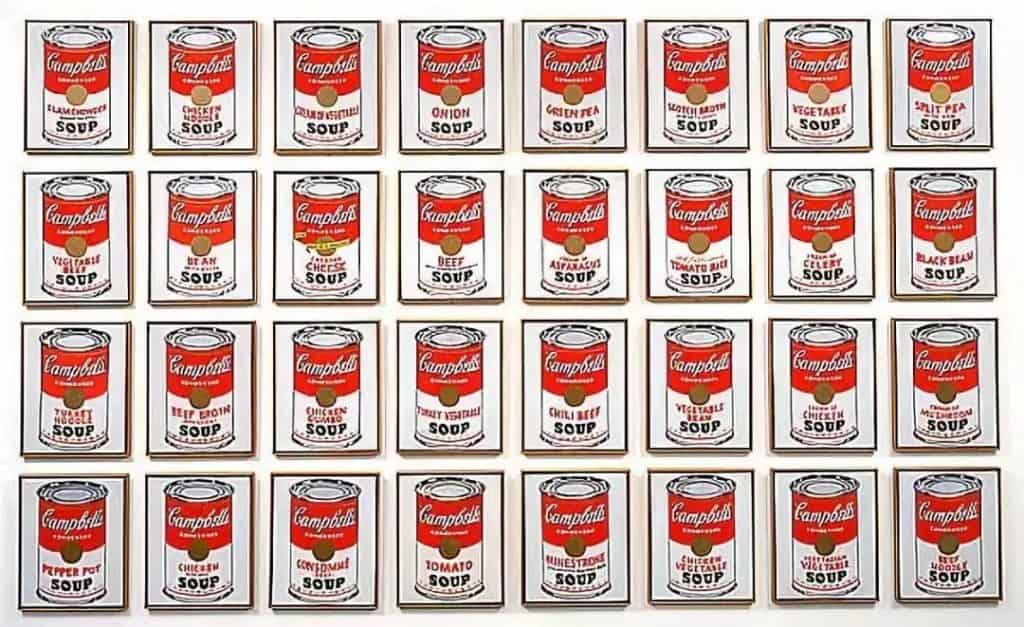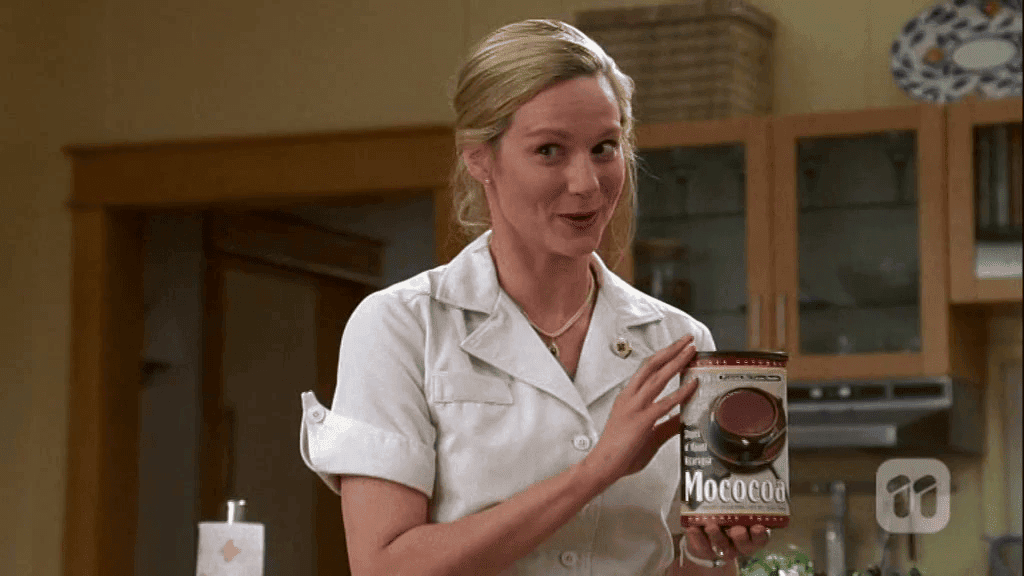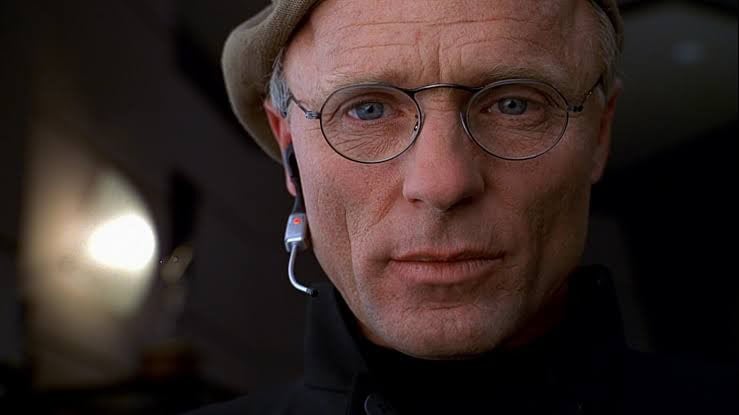If you’re studying The Truman Show for HSC English and need to write up an analysis and understand the themes, you’re one lucky duck! This is one of the most enjoyable texts to watch and analyse in the whole HSC.
If you are looking to write some amazing analysis about The Truman Show, you have come to the right place!
You will find this article particularly helpful if you are trying to create some deeper analysis of The Truman Show which will stand out from the crowd. So let’s jump in and analyse The Truman Show!
Summary of The Truman Show
Context & Key Themes in The Truman Show
The Truman Show Analysis
How The Truman Show Links to Module B
What is The Truman Show about?
The Truman Show is a film about a reality TV show created by Christof centred on a man named Truman Burbank. The catch is that Truman does not know that he’s on a TV show.
All of his friends including his wife are actors, employed to convince him that the world he lives in is real. Throughout the film, Truman begins to doubt that his world is what it seems, so he tries to escape.
He is also driven to question his reality through a girl he fell in love with as a schoolboy, Sylvia, who he tries to find throughout the film.
He tries to escape to Fiji, where he was told Sylvia moved, but his attempts to escape are thwarted by the actors around him. For example, a travel agent tells Truman there are no flights to Fiji for a month, the bus he tries to catch breaks down, and the ship he tries to catch leaves before he can get on.
‘The Truman Show’ symbolises the conflict between reality and artificiality in a media-dominated world, delving into the effects of constant surveillance, manipulation, and the pursuit of freedom within a manufactured reality. It prompts reflection on truth, individual freedom, and the impact of societal pressures.
Throughout the film we also see the audience obsessively watching the show with Truman memorabilia as well as the control room where Christoph controls Truman’s world. At the end of the film, Truman faces his fear and sets out on a boat.
Eventually he reaches the edge of Seahaven and climbs us a staircase to a door to the outside world. Christof tries to convince him to stay in Seahaven, but Truman chooses to leave. The film ends with various shots of the audience watching Truman leave, and finally with two security guards asking each other “what’s on next?”.
Context & Key Themes
Mass Media
The dangerous power of mass media was becoming evident at the time The Truman Show was released. During the production, Princess Diana died in a car crash followed by paparazzi.
About the incident, Peter Weir stated:
“It was hard not to make comparisons. If there had been cameras trained on her that last night, people would have gone on watching. The romantic tryst at the hotel … she’s coming out of the Ritz … and then – oh, my God! She’s going to die. It was fascinating to me, the agony the audience was feeling — I call them the audience. Yet the paparazzi were working for them. We are complicit in creating the monster.”
The Truman Show was particularly critiquing modern society’s obsession with television, but it is important to consider how the critiques of mass media in The Truman Show are even more relevant today.
Have you checked your mobile phone screen time recently? I remember when I first got an iPhone and I was horrified to see my screen time totalled over an hour.
Now, with my screen times regularly building up to 4 or 5 hours, 1 hour seems like a successfully screen-free day! Perhaps we are more at danger than ever of living in a world where mass media controls our lives.
Want a deeper dive into the role of media? Check out our guide to the film Good Night and Good Luck!
The American Dream
The American Dream is an ideological set of beliefs in the USA. Speaking of the American Dream, James Truslow Adams states that, “Life should be better and richer and fuller for everyone, with opportunity for each according to ability or achievement” regardless of social class or circumstances of birth.
The American Dream is rooted in the Declaration of Independence, which proclaims that “all men are created equal” with the right to “life, liberty, and the pursuit of happiness”.
While this sounds nice, many have critiqued the American Dream as unrealistic, as many simply don’t have the same opportunities as others. It is also associated with an unhealthily obsessed with consumerism, and achieving material wealth.
The American Dream evokes the idea of a nuclear family, a house in the suburbs, a white picket fence and a car — all things we see in The Truman Show.
Consumerism
Consumerism is a term which refers to the way our society encourages us to keep buying more and more stuff. It tells us that money does indeed buy us happiness. This way of living has been critiqued as greedy, driving inequality and destroying the environment.
Consumerism is heavily tied to the mass production of goods. In a consumerist society, we all chase after the exact same mass produced goods, which some argue strips us of our unique identities.
The Truman Show deals with consumerism through the constant product placement throughout the film.
It deals with the lack of individuality, particularly in the scene where Truman tries to leave Seahaven on a bus. While Truman is smiling, the rest of the bus look expressionless, like clones of one another.
Freedom and Imprisonment
In “The Truman Show,” the theme of imprisonment and freedom is deeply explored through various techniques that emphasise Truman’s entrapment within a fabricated reality.
The mise-en-scène symbolises his confinement, reinforcing the notion that Truman is imprisoned within the artificial world created for him.
Likewise, The recurring use of high-angle shots and the constant surveillance by cameras portray Truman’s lack of privacy and freedom, showcasing how his every move is monitored, contributing to his sense of captivity.
Playing God
The theme of ‘playing god’ is evident through Christof’s omnipotent control over Truman’s life, akin to a creator manipulating his creation. His surveillance and manipulation critique societal voyeurism, reflecting on media’s power and ethical dilemmas in a culture fixated on observing others.
This theme challenges absolute authority, raising moral questions about the blurred boundaries between entertainment and ethics in society’s voyeuristic tendencies.
Reality and Illusion
The theme of ‘reality and illusion’ centres on Truman’s struggle within the constructed world of Seahaven, emblematic of societal ideals perpetuated by media influence.
The pervasive illusion of perfection in Seahaven, highlighted through mise-en-scène, mirrors Truman’s entrapment. This reflects broader societal tendencies, critiquing the manipulation of reality by media, prompting contemplation on authenticity, and individual autonomy in a world dominated by manufactured illusions.
Overcoming Fear
The film encapsulates the theme of ‘overcoming fear’ as Truman gradually defies the constraints imposed by his controlled reality.
Director, Peter Weir utilises Truman’s evolving character development to symbolise courage in confronting his fears, offering a poignant reflection on the human capacity to challenge societal constraints and internal fears for genuine freedom and self-discovery.
The motif of the exit or door is particularly significant within the film. It represents Truman’s courageous pursuit of liberation from his controlled world and the ultimate challenge to confront and transcend fears for genuine personal freedom.
Hedonism and Comfort
Through the contrast of lighting and ambiance in “The Truman Show,” Director Peter Weir ingeniously portrays the allure of comfort and pleasure within Seahaven.
The manipulation of bright light and serene settings crafts an idyllic atmosphere, reflecting societal ideals where comfort takes precedence.
Truman’s skepticism amidst this curated world questions whether a life of constant ease can offer genuine fulfilment, inviting contemplation on the balance between comfort and the pursuit of a meaningful, authentic life in a society driven by hedonistic tendencies.
Remember…
It is important that when you are writing an essay on The Truman show, that you say something about these themes.
For example, rather than talking about ‘freedom and imprisonment’, say something like, ‘The Truman Show satirises modern society, suggesting it is a dystopia where we are imprisoned by mass media and advertising’.
Module B is all about having your own interpretation of the text, so it is crucial that you have your own, unique perspective on the themes of the text.
How to Analyse The Truman Show in 3 Steps for HSC English (Analysis)
Step 1: Choose an example and technique
The best way to choose an example is to find a technique. The technique is the key to unlocking deeper meaning in a text, which you will need in your analysis.
We have chosen the example of two men pinning Truman against a poster for Kaiser free-range chicken.
The technique we have identified is recurring product placement.
Searching for quotes from The Truman Show to analyse? Check out our article!
Step 2: Identify the effect of the technique
This is the step in analysis that most people miss! It’s easy enough to identify a technique, and link your example to a theme… but most people forget to unpack what the technique is doing, and how that technique allows the composer to express an idea.
For the example we have chosen, we have said,
The audience, rather than Truman whose back is turned, are forced to notice the advertisement.
Here, we unpack the details of what is actually happening in the example and how those details link to our theme.
Step 3: Link to a key idea
The third step to writing good analysis is linking your technique to a key idea. This is where you want to uncover something deeper about your text.
If you’re writing an essay, this key idea will be linked to your topic sentence, but if you’re just writing TEE tables, it might just be any deeper idea you can find. We have said:
This exposes that Truman’s audience are the ones manipulated by media and consumerism, more than Truman himself is. Weir emphasises not only that the audience are complicit in Truman’s imprisonment, but that we are also metaphorically imprisoned by our television boxes to perpetually consume advertisements.
Now, let’s organise our analysis by placing it in a TEE table like below!
How The Truman Show Links to Module B: Close Study of Literature
Firstly, let’s have a look at the Module B syllabus:
As you can see, there is a strong focus on personal responses and interpretations of the text. This means that you need to come up with your own unique argument for The Truman show — you can’t just have the same argument as everyone else in your class.
You need to be arguing something more unique than just ‘The Truman Show demonstrates the dangers of consumerism, Mass Media and the American Dream.’
So how do you come up with this unique, original argument which is different to everyone else in your class? The answer is in analysing the text for yourself!
Here are three crucial steps to analysing the text to create your own unique argument:
- Follow the analysis tips above to make a long list of all the different examples of techniques in the text.
- Recognise patterns in what these examples are trying to say.
- Use these patterns to help you form your arguments and thesis statements for your essay.
Even though you may not know the question before you go into the exam, it’s important to think about potential thesis statements you could use to answer questions before you enter the exam room.
We recommend using these practice questions to help you develop thesis statements for Module B.
It’s also important to consider the distinctive qualities of your text in Module B. This might include specific film techniques which are unique to this film, for example the fish eye cameras representing the buttonhole cameras we see Truman through. Make sure to look out for these distinctive qualities when you are analysing the text!
Need some help analysing other texts?
Check out other texts we’ve created guides for below:
- Mrs Dalloway
- King Lear
- Hamlet
- Jane Eyre
- In Cold Blood
- To Kill a Mockingbird
- Amélie
- Pride and Prejudice
- Jasper Jones
- One Flew Over the Cuckoo’s Nest
- Macbeth
- Persepolis
Are you looking for some extra help with your analysis of The Truman Show for HSC English?
We have an incredible team of English tutors and mentors!
We can help you master your analysis of The Truman Show by taking you through a summary, its key characters and themes. We’ll also help you ace your upcoming English assessments with personalised lessons conducted one-on-one in your home or online!
We’ve supported over 8,000 students over the last 11 years, and on average our students score mark improvements of over 20%!
To find out more and get started with an inspirational English tutor and mentor, get in touch today or give us a ring on 1300 267 888!
Brooklyn Arnot has a Bachelor of Arts majoring in English Literature with Honours at the University of Sydney. She scored an HD average and has even received the Dean’s award for excellence! Brooklyn teaches our English classes at Art of Smart and has over 5 years of experience supporting Year 11 and 12 students throughout their HSC. She’s also a new Syllabus expert and studied 4U English in high school.














